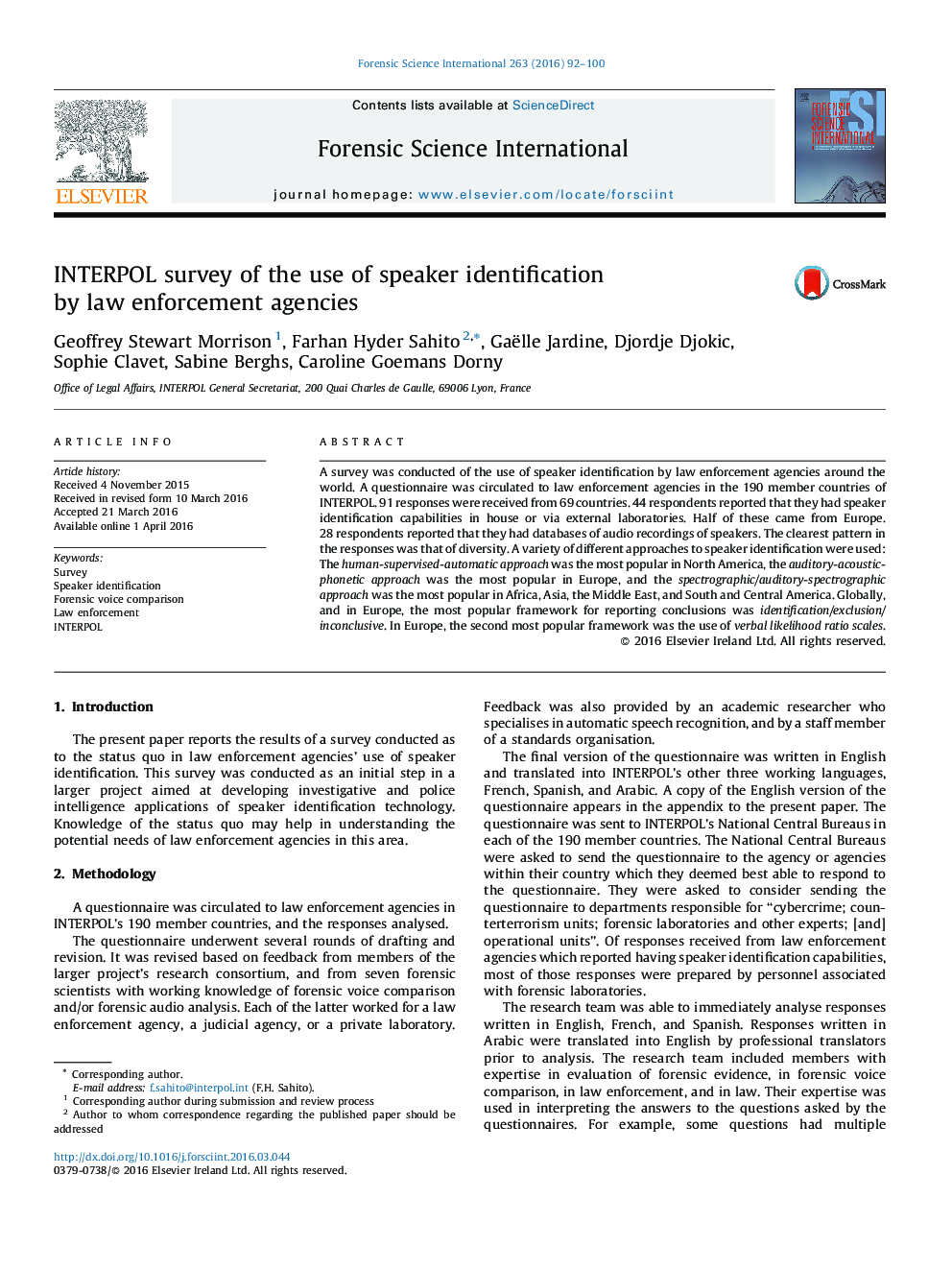| کد مقاله | کد نشریه | سال انتشار | مقاله انگلیسی | نسخه تمام متن |
|---|---|---|---|---|
| 95142 | 160415 | 2016 | 9 صفحه PDF | دانلود رایگان |
• Survey of the use of speaker identification.
• Law enforcement agencies in INTERPOL member countries.
• Most popular approaches: auditory acoustic phonetic; (auditory) spectrographic.
• Most popular frameworks: identification/exclusion/inconclusive; likelihood ratios.
A survey was conducted of the use of speaker identification by law enforcement agencies around the world. A questionnaire was circulated to law enforcement agencies in the 190 member countries of INTERPOL. 91 responses were received from 69 countries. 44 respondents reported that they had speaker identification capabilities in house or via external laboratories. Half of these came from Europe. 28 respondents reported that they had databases of audio recordings of speakers. The clearest pattern in the responses was that of diversity. A variety of different approaches to speaker identification were used: The human-supervised-automatic approach was the most popular in North America, the auditory-acoustic-phonetic approach was the most popular in Europe, and the spectrographic/auditory-spectrographic approach was the most popular in Africa, Asia, the Middle East, and South and Central America. Globally, and in Europe, the most popular framework for reporting conclusions was identification/exclusion/inconclusive. In Europe, the second most popular framework was the use of verbal likelihood ratio scales.
Figure optionsDownload high-quality image (203 K)Download as PowerPoint slide
Journal: Forensic Science International - Volume 263, June 2016, Pages 92–100
